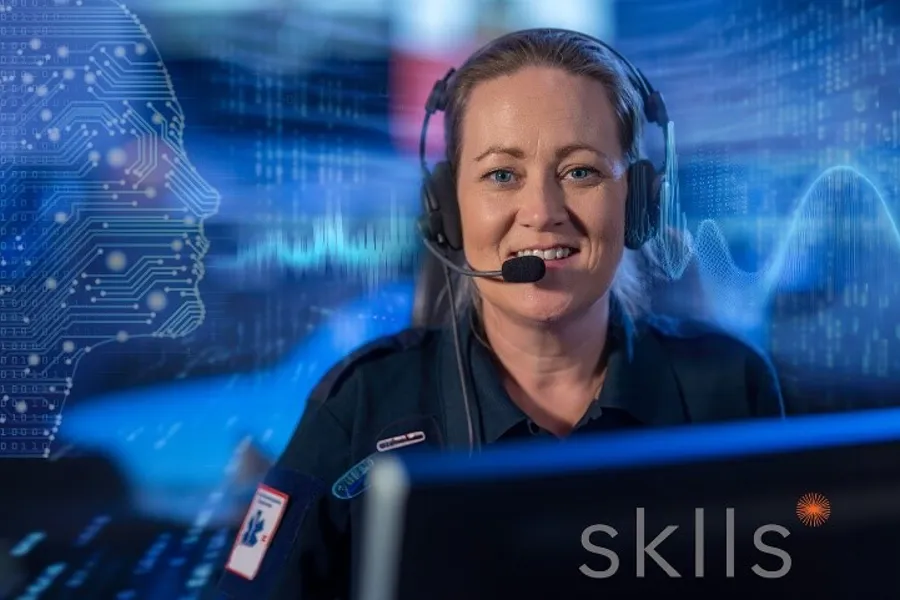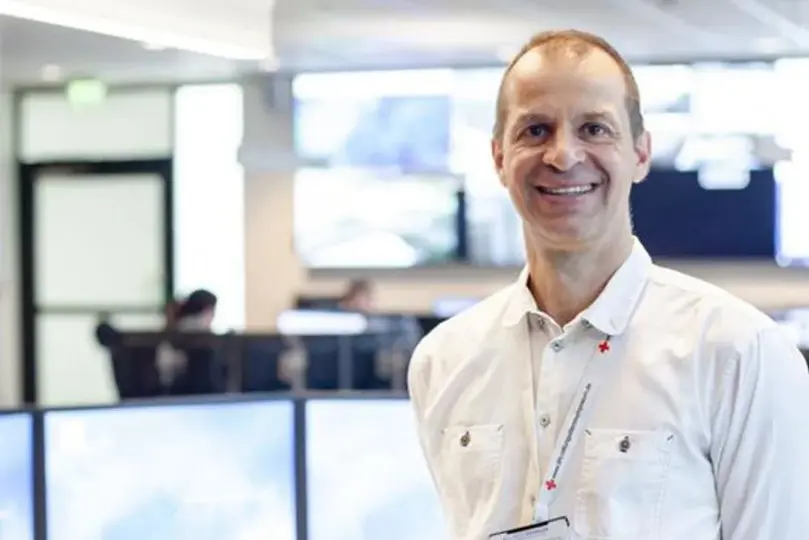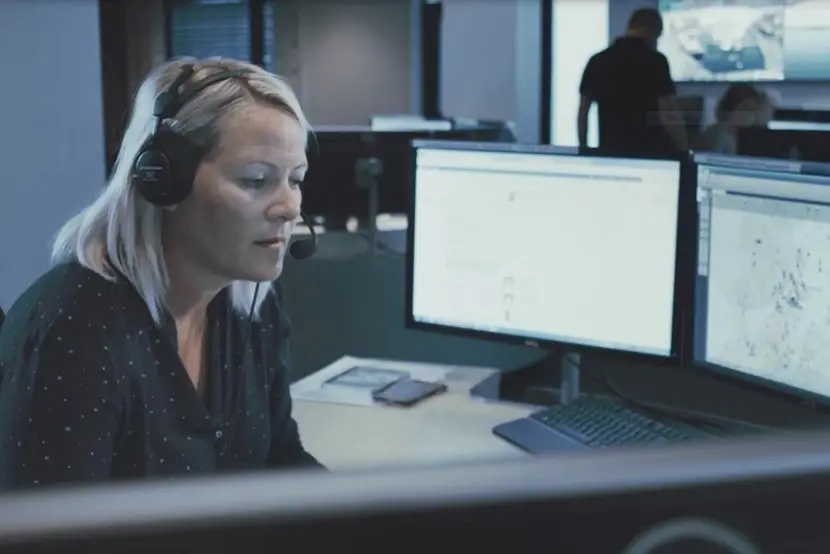AMK Simulator
The AMK Simulator project is a public-private partnership aimed at developing a simulator for the Emergency Medical Communication Centre (AMK).

The project originated from a need for improved education, training, and practice within AMK.

Currently, there is no standardized recruitment, education, or continuing education for AMK operators, neither in technical skills nor communication. A training tool is therefore desirable to ensure a high professional standard among the operators.
The HiSkills AMK Simulator project, a collaboration between RAKOS, AMK Stavanger, Sklls, SAFER, and NKLM, combines artificial intelligence and simulation training to develop a new concept for competency building for healthcare personnel. The project received innovation funding from Helse Vest in two rounds, and in 2020, the Norwegian Research Council allocated NOK 7 million to this important project, with a project period from summer 2020 to April 2025.
The HiSkills AMK Simulator is a training simulator where healthcare personnel interact with virtual patients or callers. This means that users train on realistic scenarios inspired by real-life situations while using the tools they normally employ. Healthcare personnel will receive calls from virtual patients or callers who respond to what the AMK operator says. This allows for practice across countless scenarios and improvement in areas where they may feel uncertain.

Lena A. Heimvik, Head of the Prehospital Clinic, at a workstation at AMK Stavanger. Here, operators can train without leaving their desks, using the same tools they use in real emergency calls.
The project has developed versions for out-of-hours medical services (legevakt), fire departments (110-centrals), and foreign emergency centers. Furthermore, the project aims to develop versions for general practitioners and police to practice communication. The goal of the HiSkills AMK Simulator is to ensure that all those working in life-saving roles possess the necessary theoretical knowledge, competence, experience, and confidence to perform their jobs optimally, regardless of the acute and critical situations they may encounter.
This project aims to enhance the efficiency and quality of treatment provided by AMK. For operators, thorough training and regular practice can lead to increased confidence and job satisfaction. In emergency medicine, this can make the crucial difference, saving vital seconds and minutes before the correct diagnosis and treatment are administered, thereby saving lives.
The project has evolved in tandem with advancements in artificial intelligence, large language models, and ChatGPT. In the promotional films below, one can observe the development of the virtual caller from the first prototype with a robotic voice and pre-programmed responses to the current version, which features emotion and realism in the voice, numerous variations of individual scenarios, and different virtual callers with varied voices and responses.
The AMK Simulator has been used in AMK courses since 2021, and as the technology has developed, the positive feedback has also increased. Initial feedback indicated that new operators became operational more quickly and handled calls independently sooner than before.
In the spring of 2024, a pilot study was conducted involving regular training on cardiac arrest scenarios in the simulator for operators in Førde and Stavanger. Several operators trained on cardiac arrest scenarios from January to June 2024, and 37 of these operators subsequently completed a voluntary survey. 32 out of 37 reported that they had learned something from the simulator, and 8 out of 9 new operators indicated the same (with "new" defined as having less than two years of experience in AMK). In the same group, 35 out of 37 expressed a desire to use the simulator for future training, and among the "new" operators, all (9 out of 9) wished to continue training. On a scale from 1 to 10, operators were asked to assess the usefulness of the training, with 10 representing maximum benefit. Over half of the operators rated the usefulness of the training at 8 or higher, and for "new" operators, the median rating was 9 or higher.
As of spring 2025, the AMK Simulator is used by half of the AMK centers and several out-of-hours medical services in Norway. The technology is also utilized in other projects such as CallerSim and KI-TOLHK.